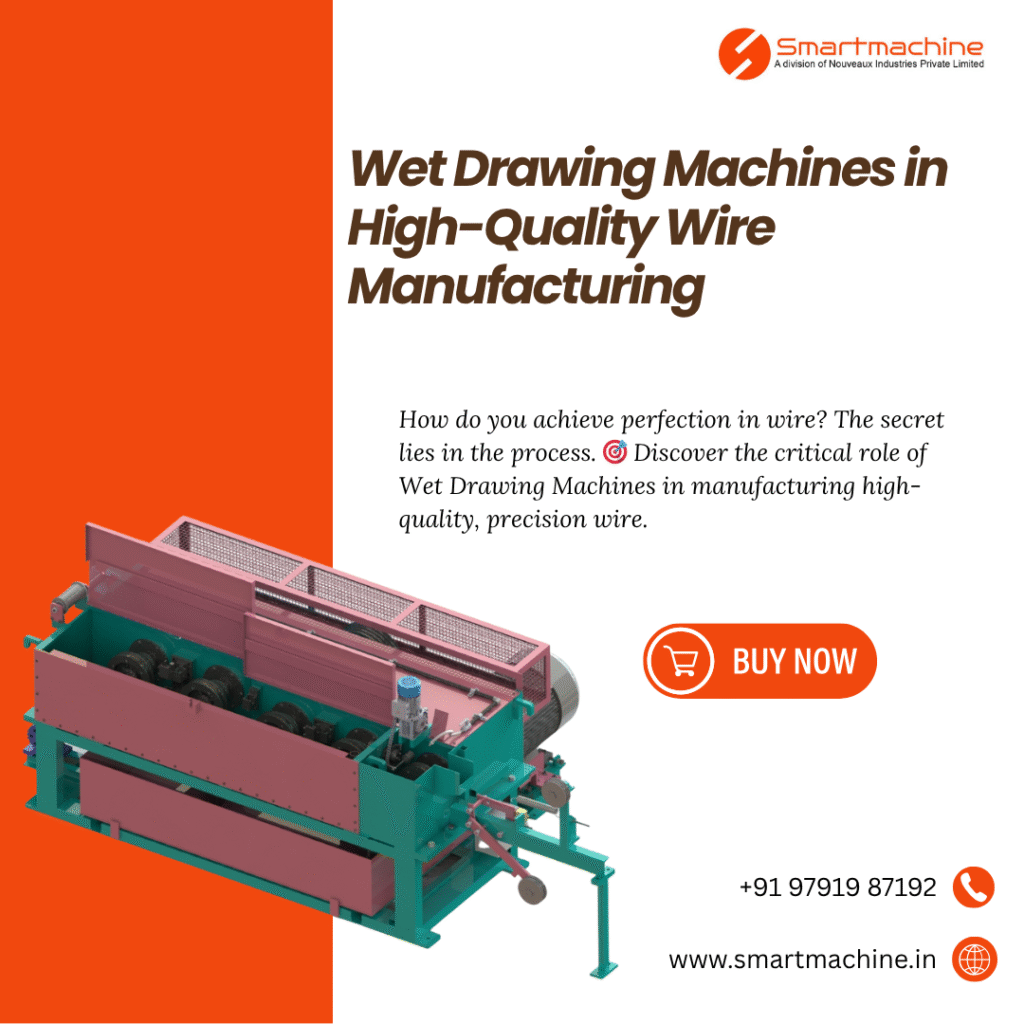In the world of wire manufacturing, the end product—whether it’s a high-strength steel cord for a tire, a delicate conductor for electronics, or a sturdy strand for a bridge cable—gets all the attention. But behind every spool of high-quality, precision-engineered wire lies a crucial and often underappreciated process: wire drawing. And when the demands for finish, strength, and thinness are highest, one machine stands out—the Wet Drawing Machine.
While there are various drawing methods, wet drawing is the gold standard for producing fine and ultra-fine wire with exceptional quality. Let’s dive into what a wet drawing machine is and why it’s indispensable for modern, high-spec wire production.

First, What is Wet Drawing?
Wire drawing is the process of pulling a metal wire (the “rod”) through a series of progressively smaller dies to reduce its diameter and increase its length. Wet drawing distinguishes itself by submerging the dies and the wire itself in a lubricating and cooling fluid, typically a specialized soap or emulsion, throughout the multi-stage process.
This “wet” environment is the key that unlocks a superior final product.
Top 5 Reasons Wet Drawing Machines are Essential for Quality
1. Unrivaled Surface Finish and Cleanliness
The constant flood of lubricant in a wet drawing machine does more than just reduce friction. It creates a hydrodynamic film that prevents direct metal-to-die contact. This results in an exceptionally smooth, bright, and scratch-free surface finish. For applications like electroplating, fine conductor wire, or medical components, this impeccable surface quality is non-negotiable.
2. Superior Heat Dissipation for Consistent Properties
As the wire is plastically deformed, immense heat is generated. Excessive heat can anneal the wire (softening it unevenly), cause galling (material welding to the die), and lead to internal stresses. The wet drawing fluid acts as a highly efficient coolant, rapidly carrying heat away from the wire and dies. This ensures consistent mechanical properties—like tensile strength and ductility—throughout the entire length of the wire.
3. Enabling Extreme Reductions and Fine Gauges
The exceptional lubrication allows for much higher single-pass reduction rates compared to dry drawing. More importantly, it is the only practical method for producing ultra-fine wire gauges (often down to fractions of a millimeter). The process stabilizes the thin wire, preventing breakage and allowing for the high-speed production of delicate wires used in telecommunications, precision motors, and winding applications.
4. Extended Die Life and Reduced Operational Costs
Friction and heat are the primary enemies of a drawing die. They cause wear, deformation, and failure. By drastically minimizing both, the wet drawing process significantly extends the operational life of costly diamond or tungsten carbide dies. While the initial setup for a wet drawing system is more complex, the long-term savings in die consumption and machine downtime are substantial.
5. Enhanced Process Stability and Efficiency
Modern multi-hole wet drawing machines are engineering marvels of efficiency. They can take a single rod and reduce it to a fine wire in one continuous, in-line operation. The submerged environment dampens vibration and provides consistent processing conditions from the first die to the last. This stability translates to higher production speeds, fewer breaks, and a more uniform final product with minimal tolerance variation.
Where You’ll Find Wet Wire Drawing in Action
Wet drawing isn’t used for every type of wire; it’s specialized for high-value applications where quality is paramount. Key industries include:
- Electrical & Electronics: Magnet wire (enameled wire), fine copper conductors for cables, and bonding wire for semiconductors.
- Steel Cord & Tire Manufacturing: The high-strength steel cords that reinforce radial tires are produced through sophisticated wet drawing processes.
- Automotive: Clutch and brake cables, and other high-performance mechanical cables.
- Medical: Precision wires for guides, sutures, and surgical tools.
- Fastener Industry: High-quality fine wire for screws and bolts requiring a perfect finish.
The Bottom Line: A Strategic Investment in Quality
Choosing a dry drawing process over a wet drawing machine might seem like a simpler option for some applications. However, when your goal is to manufacture fine, high-strength, high-finish wire with exceptional consistency and efficiency, there is no substitute.
The wet drawing machine is more than just a piece of equipment; it’s a foundational technology that enables the advanced materials and miniaturized components our modern world depends on. It transforms a raw metal rod into a precision-engineered product, making it the true unsung hero of high-quality wire manufacturing.
